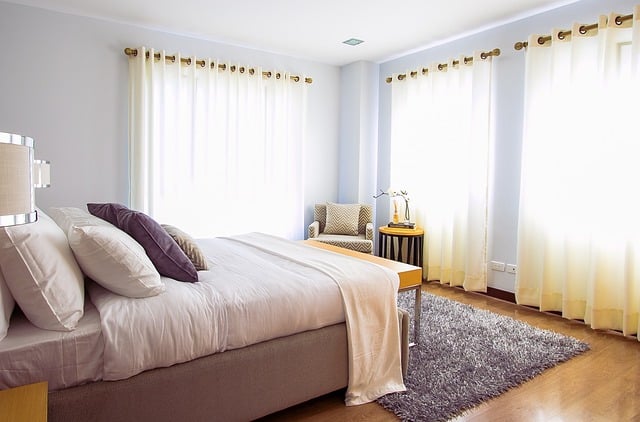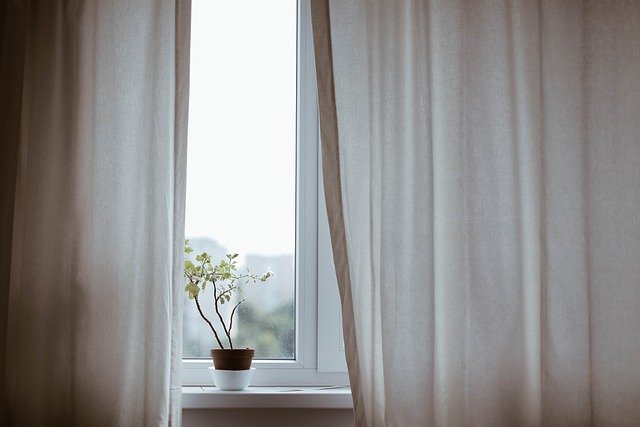Introduction – Decorative and Insulating
Insulation is one of the few truly sustainable ways that require no fossil fuels or energy yet reduce your carbon emissions because they cut off the external environment from affecting the internal environment, for example preventing heat escaping during hot days and preventing heat from entering during cold days.
That’s right, insulation works both ways. The first function of blinds is to block out the sun light from entering, which serves an insulating function by keeping out radiative heating from the sun. The second function of blinds is to act as an conductive insulator, especially for blinds that trap air, which prevents heat exchange between the outside and inside of a window.

Blinds for your home are super useful for window coverings. There are many types of blinds, such as sliding, mini, vertical, and more. Blinds that insulate your home are needed to keep the cold from your house. Blinds are also one of the things that affect your interior design in such a great way.
In some cases, you can have a window that is difficult to cover with traditional curtains. That is why blinds are becoming popular from time to time. For example, sliding doors or high-ceiling windows are not ideal for hanging drapes because they get in the way of opening and closing. In such a situation, blinds are the best solution for this problem, as you can use them in any location and window shape.
7 Blinds That Insulate
Without windows in our homes, it will be hard for us to feel comfortable inside our houses because the sun can make a hot room. So, we need to have windows to let the air flow. However, with the window open, it can let the cold air or hot air enter and outside our house. That is why you need blinds that insulate your home to block the sunlight and cold air that come into your house. Here are 7 blinds that insulate your home.
1. Cellular Shades
Cellular shades, also known as honeycomb blinds, are popular for covering windows. Their unique design features multiple cells that trap air, creating an insulating barrier against heat and cold. These blinds also provide soundproofing benefits, making them ideal for bedrooms or home offices.
In addition to their functional qualities, cellular blinds come in various colors and fabrics to match any decor. You can also customize them with light-filtering or blackout options for greater control over the level of natural light in a room.
For people who have looked into the quantitative properties of insulation, cellular shades do have an R-value attached to them. R-values tell you the amount of heat that gets through. The higher the R-value, the more insulating the material. Cellular shades provide a high level of insulation and can help reduce energy costs by up to 25%. The insulation value of these shades is measured in R-values, which range from 2 to 5.
2. Drapery
Regarding window blinds, drapery shades offer several advantages over traditional blinds. Firstly, they create a better seal against drafts and can improve insulation in the winter. This can lead to lower energy bills and a more comfortable indoor temperature. Secondly, drapery shades offer more flexibility in terms of style and design.
They come in various colors and fabrics, allowing for greater customization of the overall look compared to blinds that often only come in neutral tones. Finally, drapery shades are better at blocking light and providing privacy when closed. For those looking for blinds that insulate and enhance their space’s aesthetic, drapery shades should be the preferred option.
3. Shutters
Shutters are common options for insulating blinds on windows. Shutters, typically made of wood or vinyl, cover the window with solid panels that can be opened and closed to let in light and air. Shades, on the other hand, are usually made of fabric or woven materials that roll up and down to control light exposure while still allowing airflow.
Both types of blinds have the added benefit of adding an extra layer against outside temperatures, helping to keep a room warm in the winter and cool in the summer. Additionally, some insulation blinds come with reflective coatings that can further increase energy efficiency. When choosing blinds for insulation purposes, it is important to consider both styles, materials, and additional features for maximum energy savings.
4. Solar Shades
Solar shades are a fantastic option for window blinds that insulate your home. These blinds block out the sun’s heat and UV rays, keeping your rooms cooler in the summertime and reducing the strain on your air conditioning system.
In the winter, they trap warm air inside and prevent it from escaping through your windows, leading to energy savings on heating costs. Solar shades come in various designs, including light-filtering options that allow you to control the amount of natural light entering a room while still providing insulation benefits.
5. Roman Shades
Roman shades not only offer a sleek and sophisticated look for your windows, but they also serve as an effective insulator. The fabric folds create pockets of air that trap heat or cool air, keeping your home comfortable year-round.
When raised, the shades stack neatly at the top of the window, letting in plenty of light and preserving your view. And because you can customize them with various levels of opacity, Roman shades give you control over how much light and visibility you want in a room.
Not only do these blinds add to the aesthetic appeal of your space, but they also provide insulation for energy efficiency. In short, Roman shades truly raise the bar for blinds that insulate.

6. Roller Shades
Roller shades are another great option for insulating your home. Made of durable and lightweight materials, these blinds can be easily rolled up or down to adjust the amount of light and heat entering a room.
Some roller shades are also available with built-in thermal liners that provide additional insulation against drafts, helping to keep your energy costs low all year round. Roller shades come in various colors and patterns, so you can find one that matches the style of your home while still providing excellent insulation benefits.
Their combination of function and style makes them an ideal choice for anyone seeking blinds that insulate their home.
7. Venetian Blinds
Venetian blinds are not only effective for controlling light and privacy, but they also offer insulation for your windows. The slats can be tilted to block out sunlight in the summer and keep warm air in the winter. Additionally, blinds made from insulating materials such as aluminum or faux wood provide even more insulation.
Another great option is cellular blinds, which have pockets of air that act as insulation against outside temperature fluctuations. When shopping for insulating blinds, it’s important to consider not just the material they’re made of but also the size and spacing of the slats.
Smaller slats and a tighter fit offer better insulation than larger slats with wider gaps. By taking these factors into account, you can choose Venetian blinds that look great and help regulate the temperature in your home.
Summary
In conclusion, many different types of window blinds can help insulate your home and save you money on energy costs. Whether you opt for Roman shades, roller shades, Venetian blinds, or another type of window treatment, the important thing is to choose a style that matches your preferences while also providing insulation benefits. So consider these factors the next time you’re shopping for blinds, and feel confident in your choice of window treatment that helps keep your home comfortable all year round.
